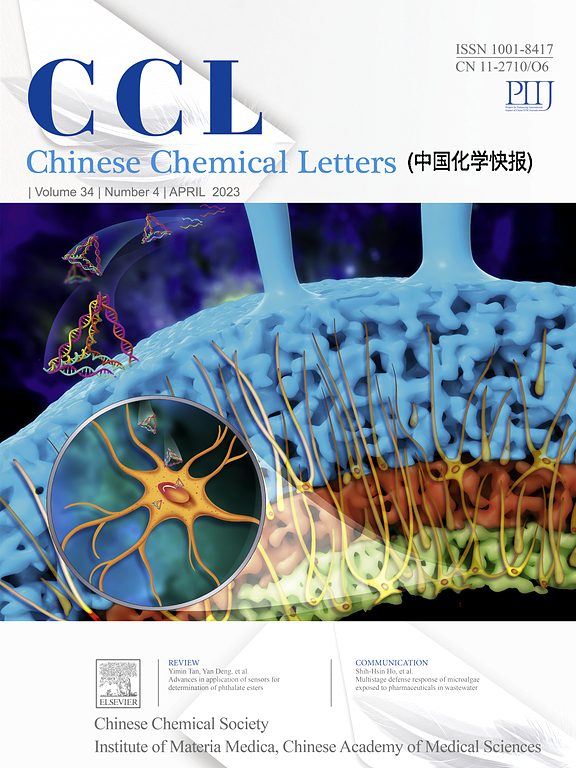Spatial-confinement combustion strategy enabling free radicals chemiluminescence direct-measurement in flame-retardant mechanism
IF 9.4
1区 化学
Q1 CHEMISTRY, MULTIDISCIPLINARY
引用次数: 0
Abstract
Generally, gaining fundamental insights into chain processes during the combustion of flame-retardant polymers relies on the qualitative and quantitative characterization of key chain carriers. However, polymer combustion processes based on conventional solid-fuel combustion strategies, due to the high coupling of pyrolysis, combustion, soot formation and oxidation, exhibit relatively high complexity and poor flame stability, and lead to a huge obstacle to the use of optical diagnostics. Herein, a spatial-confinement combustion strategy, which can produce a special staged flame with multi-jets secondary wave, is devised to provide a highly decoupled combustion environment. Glowing soot particles are therefore decoupled from main chemiluminescence region and confined to the flame tip to provide a well-controlled, optical-thin test environment for combustion diagnostic. Based on this strategy, a multi-nozzle-separation (MNS) burner is designed and fabricated, and the combustion processes associated with four model compounds, PVC, PS, PP/TBBA blends and PP/RP blends are investigated by spontaneous spectral diagnosis, and the chemiluminescence fingerprint of key diatomic/triatomic intermediates (such as OH, CH, C2, ClO, Br2, and PHO) are clearly observed. This encouraging result means that the strategy of spatial-confinement combustion we proposed shows promising prospect in many subjects associated with combustion chain regulation, such as efficient design of flame retardants.

在阻燃机理中实现自由基化学发光直接测量的空间限制燃烧策略
一般来说,在阻燃聚合物燃烧过程中获得对链过程的基本见解依赖于关键链载体的定性和定量表征。然而,基于传统固体燃料燃烧策略的聚合物燃烧过程,由于热解、燃烧、烟尘形成和氧化的高度耦合,表现出相对较高的复杂性和较差的火焰稳定性,这给光学诊断的使用带来了巨大的障碍。本文设计了一种空间约束燃烧策略,该策略可以产生具有多射流二次波的特殊分段火焰,以提供高度解耦的燃烧环境。因此,发光的煤烟颗粒与主要化学发光区域分离,并被限制在火焰尖端,为燃烧诊断提供了一个控制良好的光学薄测试环境。在此基础上,设计并制作了多喷嘴分离燃烧器(MNS),利用自发光谱诊断技术研究了聚氯乙烯(PVC)、聚苯乙烯(PS)、PP/TBBA共混物和PP/RP共混物4种模型化合物的燃烧过程,并清晰地观察到关键双原子/三原子中间体(OH、CH、C2、ClO、Br2和PHO)的化学发光指纹。这一令人鼓舞的结果表明,我们提出的空间约束燃烧策略在许多与燃烧链调控相关的学科中都有良好的前景,例如阻燃剂的有效设计。
本文章由计算机程序翻译,如有差异,请以英文原文为准。
求助全文
约1分钟内获得全文
求助全文
来源期刊

Chinese Chemical Letters
化学-化学综合
CiteScore
14.10
自引率
15.40%
发文量
8969
审稿时长
1.6 months
期刊介绍:
Chinese Chemical Letters (CCL) (ISSN 1001-8417) was founded in July 1990. The journal publishes preliminary accounts in the whole field of chemistry, including inorganic chemistry, organic chemistry, analytical chemistry, physical chemistry, polymer chemistry, applied chemistry, etc.Chinese Chemical Letters does not accept articles previously published or scheduled to be published. To verify originality, your article may be checked by the originality detection service CrossCheck.
 求助内容:
求助内容: 应助结果提醒方式:
应助结果提醒方式:


